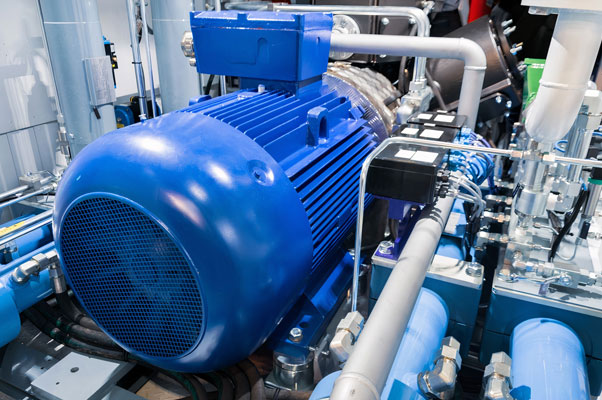
Globally, industrial electric motors are utilized to power a vast array of applications. According to the International Energy Agency (IEA), the automobile industry consumes up to 70% of all industrial energy, 35% of all energy utilized in the commercial and service sectors, and 45% of all electricity produced worldwide. Each hour of downtime caused by a motor failure costs thousands of dollars, demonstrating the importance of electric motors to a variety of industrial operations.
They are the primary reason why power plants emit greenhouse gases and negatively impact the environment. Also, they are primarily responsible for the significant increase in power demand in developing nations. There is economic potential on a worldwide scale to enhance the energy efficiency of industrial motors by 20% to 30%, with most payback periods of less than three years. About 15%, or 4.3 billion tons, of the world’s annual CO2 emissions, which total 26 billion tons, are caused by electric motors. Increasing energy efficiency is one of the most cost-effective and low-risk solutions to reduce greenhouse gas emissions and halt the increase in energy consumption.
Utilize a motor that functions properly because:
Not usually do electric motors convert all of the electricity they receive into mechanical energy. Due to friction, windage, and losses in the stator, rotor, and magnetic core, some energy is wasted. Due to these losses, the motor’s performance is deteriorating. When you consider how much energy is consumed and how electric motors are utilized in industry, it becomes clear why and how crucial it is to analyze energy efficiency and establish minimum energy performance criteria.
The accuracy with which efficiency and motor loss are assessed relies on the testing method employed. There is no single testing procedure employed across all industries in the globe. Even though the concept is simple, it might be difficult to quantify and certify the energy efficiency of a motor using the various standards.
In industrial contexts, the following testing procedures are frequently discussed: IEEE (Institute of Electrical and Electronics Engineers) 112-2004 is a typical method for testing multiphase motors and generators. International Electrotechnical Commission (IEC) Publication 60034-2-1, Tests, “Methods for Calculating the Efficiency and Losses of Rotating Electrical Machinery,” 2014. The Japanese Electrotechnical Committee created JEC 37 as the benchmark for induction devices. IEEE Standard 112-2004 IEEE Standard 112-2004
This technique includes 10 measures to evaluate the efficiency of energy consumption. To select the most essential:
There are three distinct forms of IEC standard testing:
The Japanese JEC standard 37 test procedures are indifferent to the additional load losses. Businesses may save money and benefit the environment by reducing the energy use of their equipment and appliances. This is only one of the many significant economic and environmental benefits. In all of the major cities, including Manila, Quezon, Davao, Caloocan, and Cebu, we provide motor start analysis services.